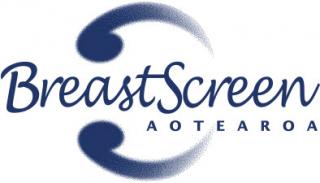- Home
- News
- Screening Matters, Issue 53, August 2015
- Impartial, balanced information allows women to make informed breast screening choices
News
- Screening Matters Newsletter
- April 2019
- April 2018
- December 2017
- August 2017
- April 2017
- December 2016
- October 2016
- March 2016
- November 2015
- August 2015
- June 2015
- April 2015
- February 2015
- December 2014
- October 2014
- August 2014
- June 2014
- April 2014
- February 2014
- December 2013
- October 2013
- August 2013
- June 2013
- April 2013
- February 2013
Screening Matters
The National Screening Unit newsletter
In this issue:
- Screening follow-up identifies Nikau’s profound deafness
- Impartial, balanced information allows women to make informed breast screening choices
- Cervical Screening Awareness Month: Cervical screening - the best not nice thing you can do!
- Free ‘pop-up’ cervical smear clinics proving popular with priority Auckland women
- RSS feeds now available for National Screening Unit programme coverage reports
- Correct labelling of cervical smear specimens essential
- Work underway to further strengthen National Cervical Screening Programme – Minister
Impartial, balanced information allows women to make informed breast screening choices

BSA Clinical Leader Dr Marli Gregory says the NSU recommends eligible women participate in BSA because, for most women, the benefits of participation outweigh the harms.
Dr Gregory says screening mammography is the only proven public health intervention that reduces the number of women who die from breast cancer.
‘Screening women aged 50 to 69 years reduces deaths from breast cancer for women who are screened in that age group by about 30 percent, while screening women aged 45 to 49 years reduces deaths for women who are screened in that group by about 20 percent. These figures are not New Zealand data, but from randomised controlled trials performed overseas.
‘Women diagnosed in BSA are also more likely to have breast-conserving surgery, are less likely to require extensive secondary surgery, are less likely to require chemotherapy, and less likely to need radiotherapy after a mastectomy.’
She says screening mammography may be less sensitive in younger women, and they are also more likely to have a benign or non-cancerous biopsy within BSA.
‘This makes discussions between younger women and their health practitioners even more important, as the benefits and harms are more finely balanced. New Zealand evidence shows there are significant benefits in screening Māori women, as they have a higher rate of invasive breast cancer.
‘A breast cancer that would never have caused problems during a woman’s lifetime may be detected during screening. Unfortunately it is not possible to test which cancers will or won’t cause problems, and if a cancer is found, women will be offered treatment. This is referred to as over-diagnosis or over-treatment.’
Ductal carcinoma-in-situ (DCIS) is an early form of breast cancer that is contained within the breast duct and has not spread into the surrounding tissue. Although a small number of cases of DCIS are found because there are changes in the nipple, most cases are found through mammography screening.
‘Making a decision about what to do about DCIS is difficult,’ says Dr Gregory. ‘Not all cases of DCIS develop into invasive cancer, but it is not possible to say which will and which will not. About 40 percent of low-grade DCIS cases progress to invasive disease over 30 years. Some women with low-grade DCIS may choose not to have surgery, but instead wait and see.’
NSU’s position statement on addressing the harms of population breast screening examines recent major international reviews of mammography screening and discusses known harms associated with breast screening, including over-diagnosis. ‘These harms are not new and have been previously considered by the BSA programme,’ says Dr Gregory.
‘The position statement has been reviewed by the National Health Committee (NHC), an independent statutory body charged with prioritising new and existing health technologies and assisting the health and disability sector to spend its funding in the most effective way.
‘The NHC’s view is that the NSU’s position statement offers a balanced assessment of the harms of breast screening and may help clarify the large amount of sometimes contradictory information that has appeared.’
She says the NSU also regularly monitors the BSA programme to ensure it meets the highest standards of quality and safety, and will continue to work with expert groups to make sure all its screening programmes are based on the latest robust scientific evidence.
‘We are also currently reviewing BSA pamphlets and website information to ensure both the benefits and harms of breast screening are accurately and clearly explained in all materials.’
To receive the Screening Matters newsletter by email, fill out our sign-up form.

